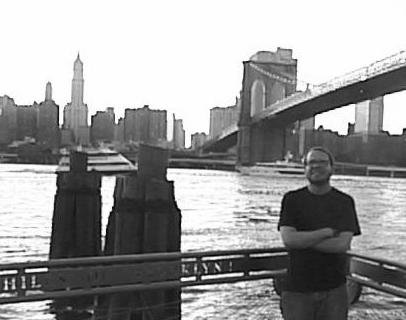July 31, 2006
Beyond Hayfa

Along t the northern coast of Israel, just south of the Lebanon border, sits the gulf of Hayfa. The gulf, which is quite small compared to what most Americans might think of as a gulf, is the second most densly populated region in Israel. The best town to compare it with in the United states would be Seattle, if it ever decided to rain in Hayfa.
The town too which the gulf gets its name—Hebrew for Beautiful Beach--surrounds the bay at the base of the gulf. There is a steep slope that rises up into the high elevations that run parallel along the Israeli coast.
Most famous of these high elevations is Mt. Carmel. This town has biblical significance, the place where Elijah the prophet brought fire down onto those who fought to worship the ancient idol god named Baal. From atop the mountain, there is a stunning view of the cosmopolitan city that crawls up to meet the eastern Mediterranean Sea. At what is believed to be the cave where the prophet lived. In the 12th century, a group of Christian hermits moved to the top of Mt. Carmel, the group eventually growing into what today is the Carmalite order of monks and nuns.
From atop the mountain, the two major economic machines that drive Hayfa are clear. In the bay, there is the giant oil refinery, that cranks out 66,000,000 barrels of crude per year. The bay is also lined with petro chemical plants. The second industry is technology, with Microsoft, Intel, Philips and IBM all staking claim in Hayfa. There modern buildings rise above the arid dry rooftops of regular businesses and apartment complexes. Technology and fuel have helped make Hayfa a technologically advanced town for the Middle East,the tlass front office towers intersected with newly paved blacktop roads. Transportation is fairly advanced, Hayfa having an accessible train and bus system. In fact, it is the only town in Israel that runs public transit during the Sabbath.
In the summer of 2000, I traveled north of the ancient Roman aquaducts just north of Tel Avive, a technical wonder in their day, and followed the road up to Caiphus, the christian name given to Hayfa. What impressed me the most about the town was the overwhelming feeling of acceptance the town had toward other faiths. Hayfa, in its long history, has seen cultures come and go. It is the home of the Bahai World center, with the Shrine of Bab, where it's founder was buried, and an impressive garden that the Bahai faith constructed as its gift to humanity. The garden can be seen from the top of Mt. Carmel, stepping its way down the mountain in its elaborate series of terraces.
the Bahai faith is most known for taking important traits of the world’s great spiritual leaders--their finer points, if you will--and fusing them into a spirituality that promotes peace and tolerance. It's a fitting place for this faith, Hayfa seeming much more tolerant than the other parts of Israel I visited that summer.
Most of Israel felt as though it would break under the pressure between Israeli Jews and Palistinians. Whenever an Israeli jeep would ride through the christian quarter of Jerusalem, where I had stayed for a while, the streets cleared out like something from an old western film, when the sheriff and bandit would step out of the saloon and onto the dusty road for a duel.
Hayfa, somehow, had spared this tension. As the hostilities began to rise, just as we were leaving Israel, Hayfa seemed more concerned about carrying on with its corporate interests.
On July 13, Lebanon began to fire rockets into northern Israel. Israel responded with its own military force, greatly escalating the conflict. There was a breathless sigh of despair as I watched rockets fly into downtown Hayfa. There was, amidst the sea of bombings after my return from Israel, a seed of hope for the Middle east. Hayfa represented this hope with its focus not on religious or ethnic differences.
It should be said that Israel operates a sort of "separate but equal" mentality on existing with Moslems. there is, I believe, room for Israel to move closer to a true Democracy than they might paint themselves to be. Yet, even in their separate but equal age, Hayfa had hope. Though I feel that it's hope might not last for too long. On July 16th, the monks of Mt. Carmel celebrated their feast day. I can imagine that the sounds of their bells rang with great tribulation, rather than celebration, against the screaming sound of the air raid sirens.
